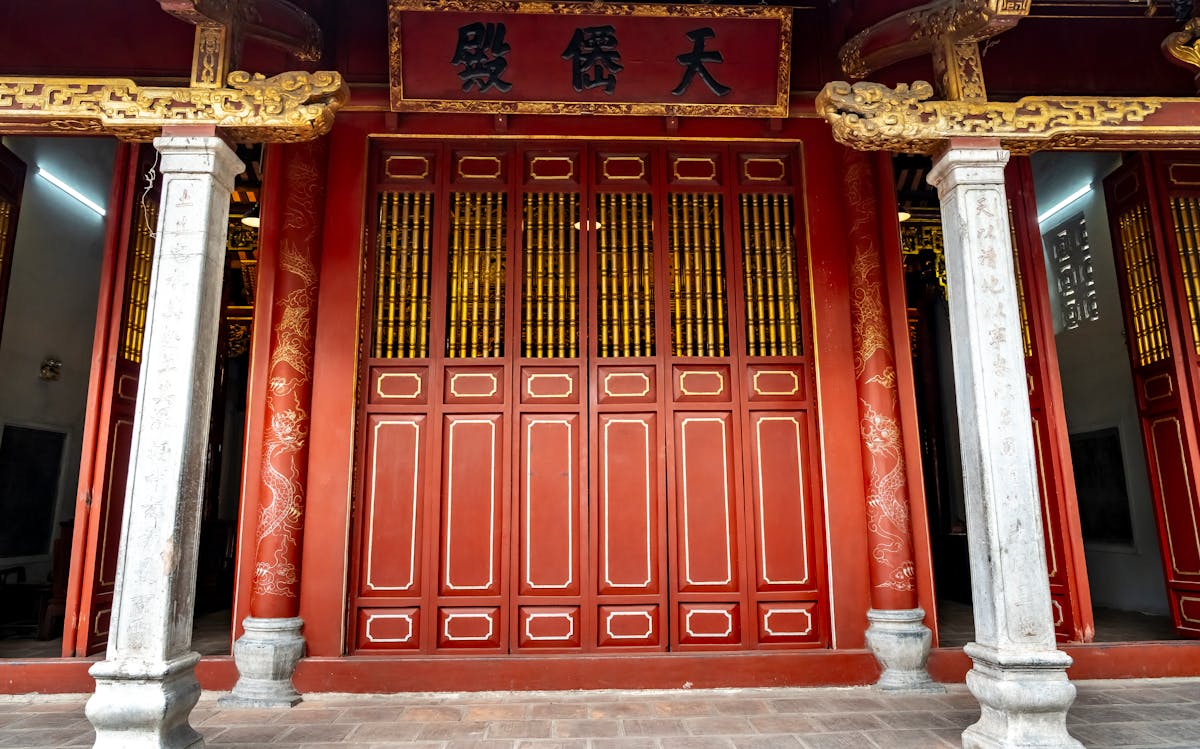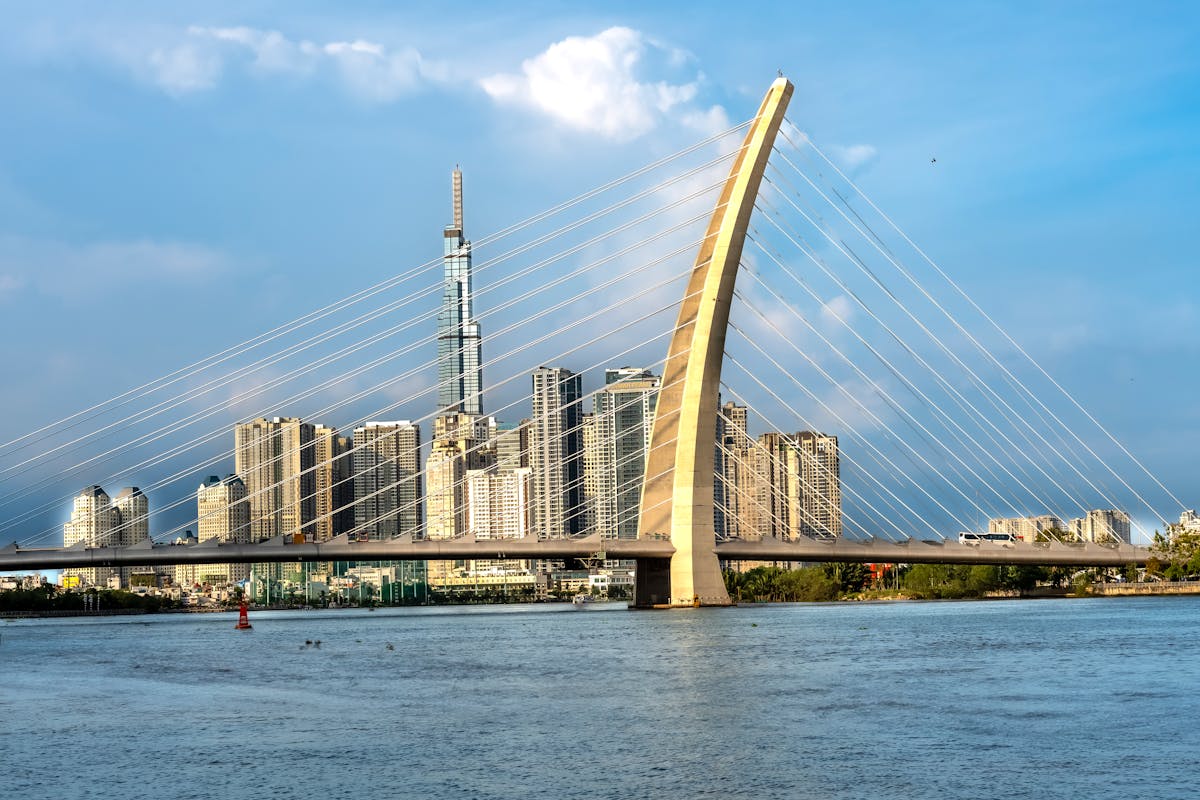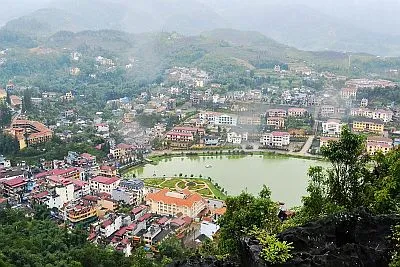Sa Pa, Vietnam, sits high in the Hoàng Liên Son mountains, offering a refreshing escape from the tropical heat found elsewhere in the country. Understanding the unique Sa Pa Temperature is crucial for planning your visit, as it dictates everything from what to pack to the best time for trekking through its stunning landscapes and vibrant ethnic minority villages. As a traveler who’s experienced the mist-shrouded peaks and golden rice terraces, I can tell you that the temperature here profoundly shapes the local culture and the traveler’s journey.
The climate in Sa Pa is often described as subtropical highland, meaning it’s milder year-round compared to Vietnam’s lowlands. However, the Sa Pa Temperature isn’t static; it experiences distinct seasons influenced heavily by altitude and monsoonal patterns. This variability is part of Sa Pa’s charm, presenting different faces throughout the year, each with its own set of activities and required preparations.
Understanding the Sa Pa Temperature Profile
At an altitude of 1,500 meters (about 4,900 feet), Sa Pa enjoys significantly cooler temperatures than places like Hanoi or Ho Chi Minh City. While never truly extreme heat, the humidity is generally high, contributing to the frequent formation of mist and fog that gives the town its ethereal beauty. Sunshine hours can be limited, particularly during the wetter periods, which is another factor influencing the perceived Sa Pa Temperature.

The location within Hoàng Liên National Park, and at the base of Fansipan, Indochina’s highest peak, further influences the microclimate. The Sa Pa Temperature at the summit of Fansipan (3,143m) is dramatically colder, often 10°C (18°F) lower than in the town itself. This highlights the rapid temperature changes possible with elevation gain in the area.
Sa Pa Temperature Season by Season
Experiencing Sa Pa through its different seasons reveals varying facets of its natural beauty and local life. The range of Sa Pa Temperature throughout the year directly impacts the landscape and the daily routines of the communities here.
Winter (December – February): The Chill of Sa Pa Temperature
Winter in Sa Pa is typically mild, but don’t let that fool you; it can get genuinely cold, especially by Vietnamese standards. The average minimum Sa Pa Temperature in January hovers around 6°C (43°F), but cold snaps can push daytime highs below 5°C (41°F), and temperatures have even dropped below freezing, bringing frost or even rare snowfall. This season sees frequent rain and dense fog, creating atmospheric, albeit often wet, conditions.

The winter months offer a quieter Sa Pa. While trekking can be muddy and visibility poor due to fog, the lower number of tourists allows for a more intimate experience. Warm layers are essential.
Spring (March – May): Blossoms and Changing Sa Pa Temperature
As winter recedes, the Sa Pa Temperature begins to climb. March and April see comfortable averages, though mornings and evenings remain cool. This is a beautiful time as plum and peach blossoms color the hillsides. Rainfall starts to increase, particularly in April and May, signaling the approach of the wet season.
Top 15+ Ideas for Unforgettable Family Fun Los Angeles
Discover the Best Backpacking in Michigan – Unforgettable Trails & Adventures
Discover the Best Time to Visit Denver – A Seasonal Guide 2025
The rising Sa Pa Temperature and beautiful blooms make spring a popular time for visitors. Trekking conditions improve, though trails can still be damp. It’s a period of transition, where you might experience cool, dry days followed by sudden showers.
Summer (June – August): The Warmest Sa Pa Temperature (and Wettest)
Summer brings the highest average Sa Pa Temperature, peaking in July and August around 20-23°C (68-73°F). However, this is also the heart of the monsoon season. Heavy, prolonged rain is common, often several hours a day. While not hot compared to lower altitudes, the high humidity makes it feel warm and muggy on drier days.
Despite the rain, summer is when the rice terraces are at their most vibrant green. Trekking requires careful planning due to muddy trails. The maximum recorded Sa Pa Temperature rarely exceeds 29°C (84°F), even on clear pre-monsoon days. Tropical cyclones can affect the area during the broader period from June to November, though the risk is lower inland.
Autumn (September – November): Golden Hues and Pleasant Sa Pa Temperature
Autumn is often considered one of the best times to visit Sa Pa, largely thanks to its agreeable Sa Pa Temperature and decreasing rainfall. September still sees significant rain, but it tapers off considerably in October and November. Temperatures are pleasant, not too cold and not too warm, creating ideal conditions for exploring.
This season is famous for the golden rice harvest, usually in late September or October, transforming the landscape into a breathtaking spectacle. The combination of comfortable Sa Pa Temperature and stunning scenery makes autumn perfect for trekking and experiencing the region’s agricultural heartland.
Sa Pa Temperature and Your Travel Experience
How the Sa Pa Temperature behaves significantly impacts your trip. Cool temperatures require layering, especially if you’re trekking early morning or late evening. Wet seasons mean appropriate footwear (rubber boots are highly recommended for muddy trails) and rain gear are non-negotiable. Sunny spells, though sometimes brief, are glorious opportunities for photography and clear views.
The local communities have adapted their lives and activities around the climate. The farming cycles, the type of crops grown, and even the construction of their homes are influenced by the variable Sa Pa Temperature and rainfall. Experiencing a warm meal by a fire on a cold, misty evening is a quintessential Sa Pa experience directly tied to the climate.
When is the Best Time Based on Sa Pa Temperature?
Choosing the “best” time depends on your priorities. If you want the most comfortable Sa Pa Temperature for trekking with less rain and stunning golden landscapes, late September to November is ideal. For blooming flowers and pleasant, cool weather before the heavy rains, March and April are lovely, although April can be quite wet.
Winter is cold and often wet/foggy but offers a unique, quiet atmosphere. Summer is wet and humid but features the iconic green terraces. For most visitors seeking a balance of good Sa Pa Temperature and conditions, spring and autumn offer the best compromises, with November often being particularly pleasant due to reduced rain.
Sa Pa Climate Data at a Glance
Here are the average climate data points reflecting the typical Sa Pa Temperature and weather patterns throughout the year:
Sa Pa – Average temperatures
| Temperatures (°C) | |||
|---|---|---|---|
| Month | Min | Max | Mean |
| January | 6.2 | 12.5 | 9.4 |
| February | 7.5 | 14.1 | 10.8 |
| March | 10.7 | 18.1 | 14.4 |
| April | 13.8 | 21.2 | 17.5 |
| May | 16.3 | 22.4 | 19.4 |
| June | 17.6 | 22.8 | 20.2 |
| July | 17.7 | 23 | 20.4 |
| August | 17.4 | 23.1 | 20.2 |
| September | 15.9 | 21.6 | 18.8 |
| October | 13.5 | 19 | 16.2 |
| November | 10.1 | 15.9 | 13 |
| December | 6.9 | 13.4 | 10.2 |
| Year | 12.8 | 18.9 | 15.85 |
Sa Pa – Average precipitation
| Month | Rain (mm) | Days |
|---|---|---|
| January | 65 | 15 |
| February | 80 | 16 |
| March | 105 | 16 |
| April | 215 | 18 |
| May | 345 | 22 |
| June | 410 | 24 |
| July | 465 | 26 |
| August | 450 | 24 |
| September | 315 | 20 |
| October | 215 | 18 |
| November | 110 | 14 |
| December | 65 | 12 |
| Year | 2835 | 226 |
Sa Pa – Sunshine hours
| Month | Average | Total |
|---|---|---|
| January | 4 | 115 |
| February | 4 | 110 |
| March | 5 | 155 |
| April | 5.5 | 170 |
| May | 4.5 | 145 |
| June | 3 | 95 |
| July | 3.5 | 105 |
| August | 4 | 115 |
| September | 3.5 | 100 |
| October | 3 | 95 |
| November | 3.5 | 105 |
| December | 4 | 130 |
| Year | 4 | 1455 |
 Scenic view of Sa Pa town in the mountains, illustrating the typical Sa Pa temperature and weather conditions
Scenic view of Sa Pa town in the mountains, illustrating the typical Sa Pa temperature and weather conditions
Frequently Asked Questions about Sa Pa Temperature
Exploring the common questions about the climate helps paint a clearer picture for potential visitors.
Q: What is the average Sa Pa Temperature?
A: The average annual temperature in Sa Pa is about 15.85°C (60.5°F), with the coldest month (January) averaging 9.4°C (49°F) and the warmest (July) averaging 20.4°C (69°F).
Q: Does it snow in Sa Pa?
A: Yes, although rarely, Sa Pa can experience snowfall during cold winter snaps. Temperatures can drop below freezing.
Q: When is the rainy season in Sa Pa?
A: The monsoon season, which is the wettest period, runs from May to September, with July typically being the wettest month. April and October are also quite rainy transitional months.
Q: How does Fansipan temperature compare to Sa Pa?
A: The temperature at the summit of Fansipan is significantly colder than in Sa Pa town, often by about 10°C (18°F) due to the much higher altitude.
Q: What clothes should I pack for Sa Pa weather?
A: Layers are key! Pack warm clothes even in warmer months, especially for evenings. Rain gear is essential, particularly from April to October. Waterproof or rubber boots are highly recommended for trekking.
Understanding the nuances of the Sa Pa Temperature is key to fully appreciating this stunning destination. Whether you arrive during the misty winters, the vibrant springs, the lush green summers, or the golden autumns, Sa Pa offers a unique blend of natural beauty and rich culture, shaped intrinsically by its mountain climate.
